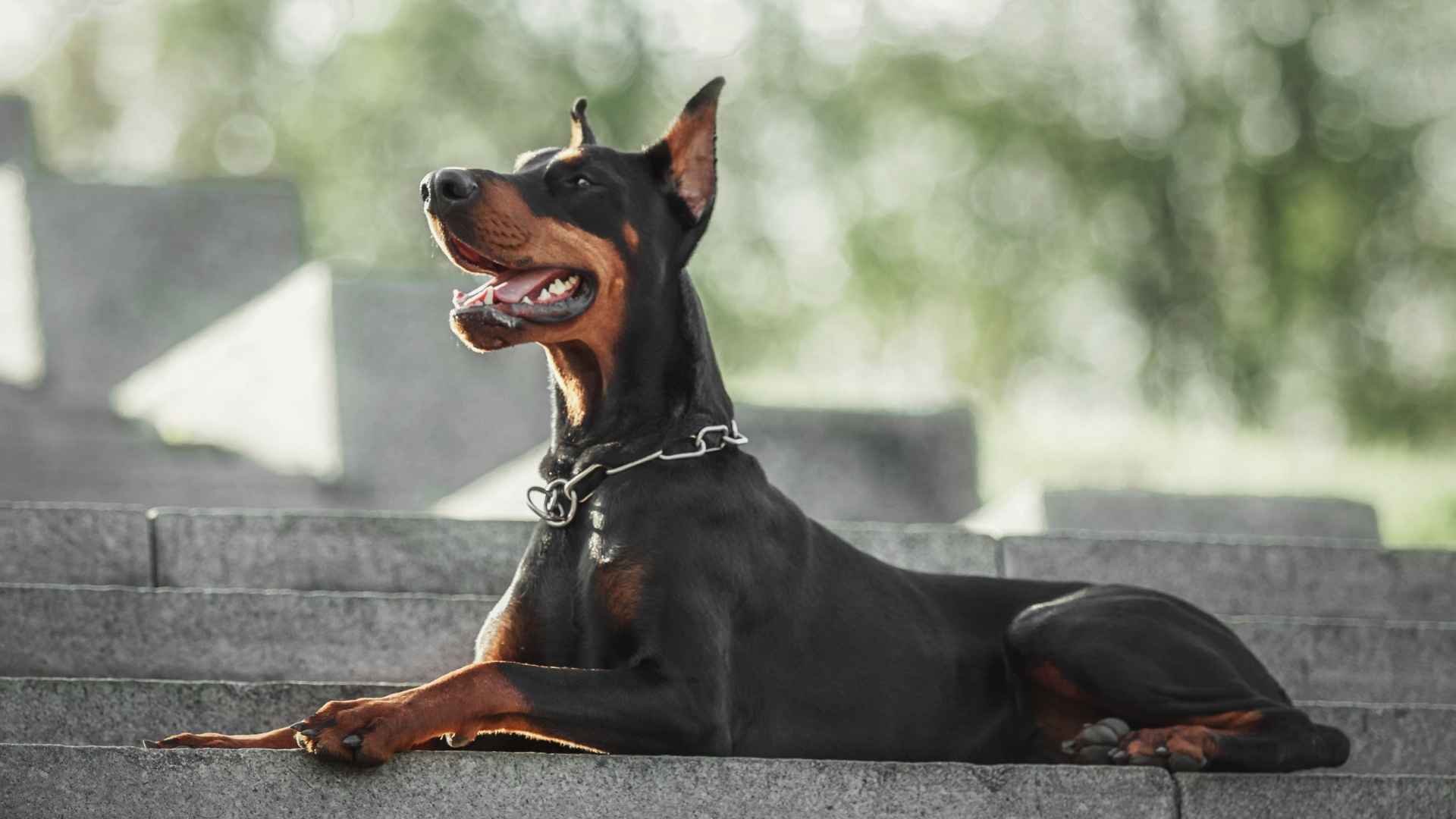When personal safety is a top priority, choosing the right canine companion can make all the difference. Some dog breeds possess an instinctive ability to guard, protect, and remain alert, making them invaluable allies for VIP protection.
These dogs are more than just loyal friends—they are highly capable partners, combining intelligence, courage, and keen senses to deter potential threats.
While natural instinct plays a role, effective protection comes from proper training and socialization. Not every dog of a protective breed will automatically step into the role of a reliable guardian.
With expert guidance, however, the right dog can become both a trusted companion and a steadfast protector. Many organizations are involved in selecting and preparing top candidates for this demanding role.
In this guide, we’ll explore the best dog breeds for VIP protection—breeds renowned for their loyalty, confidence, and trainability. From powerful physiques to unwavering devotion, these dogs excel in keeping their owners safe while forming unbreakable bonds.
Best Dog Breeds for VIP Protection
1. German Shepherd
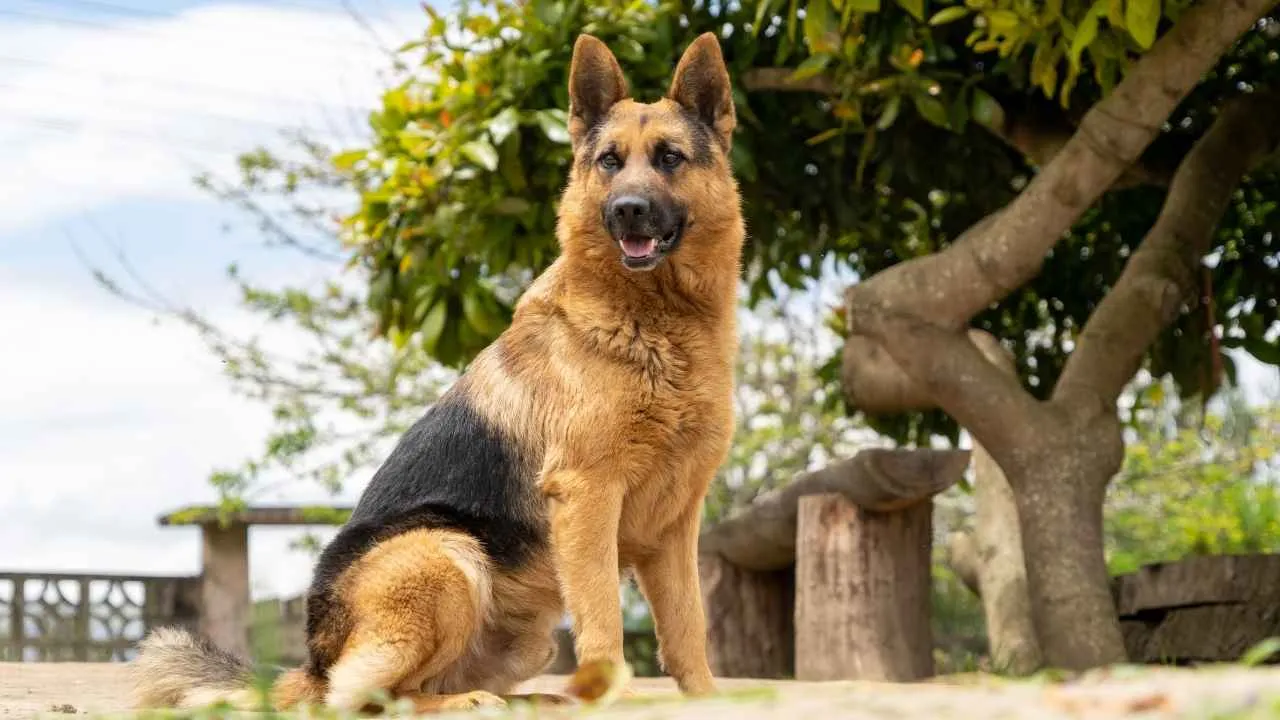
The German Shepherd, also known as the Alsatian in some regions, is one of the most recognized working dog breeds in the world. PetMD says German Shepherds are large, agile, muscular, intelligent, and loyal dogs.
Originating in Germany in the late 1800s, they were developed for herding and guarding flocks but quickly gained fame in police, military, and personal protection work. Standing 22 to 26 inches tall and weighing between 60 to 100 pounds, these dogs are muscular yet agile, with a coarse, medium-length double coat in various colors.
Known for their intelligence, loyalty, and courage, they belong to the Herding Group (AKC) and have a lifespan of 7 to 10 years. Their erect, pointed ears and confident posture contribute to their commanding presence.

Unique Traits
These good guard dogs are scent powerhouses, boasting approximately 225 million scent receptors—nearly double that of some other breeds—making them exceptional trackers.
They possess an inherent work ethic, thriving on challenging tasks and mental stimulation, and adapt easily to different working environments.
Their protective instincts are strong, but their loyalty to their family is equally unwavering. Proper training and socialization help channel their high intelligence and drive into reliable protection work, where they can excel in prey, defensive, and fight drives if genetically suited.
Fact: Despite their imposing size and bark, a well-trained German Shepherd can differentiate between real threats and harmless situations, preventing unnecessary aggression.
2. Cane Corso
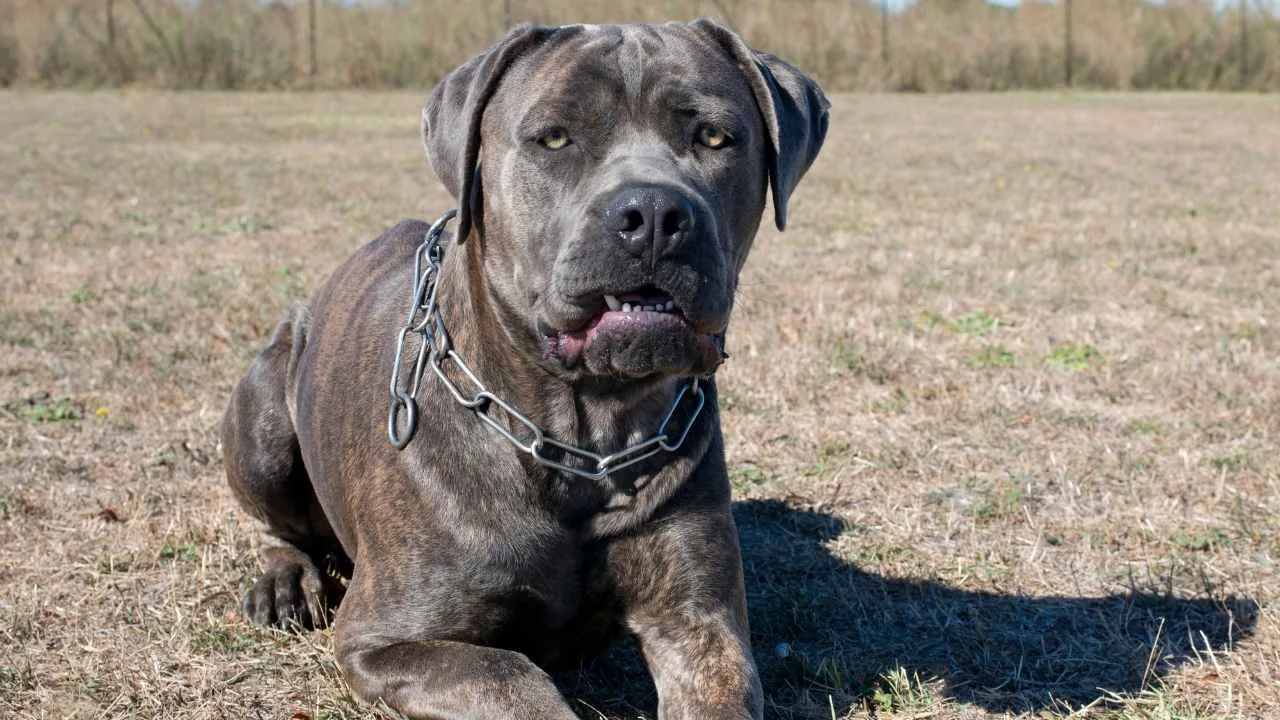
The Cane Corso, pronounced KAH-nay KOR-so, is an ancient Italian breed whose name translates to “bodyguard dog” in Latin. Historically serving as a war dog, hunter, and estate guardian, it carries an imposing presence—standing 23.5 to 27.5 inches tall and weighing between 80 and 120 pounds.
Its short, coarse coat comes in black, gray, fawn, and red, sometimes with brindle patterns or a black/gray mask. AKC says the Cane Corso is intelligent, trainable, and dignified, with an assertive and confident nature that makes it an exceptional protector.
With a life expectancy of 10–12 years, the Cane Corso belongs to the Working Group (AKC) and is renowned for its muscular build, large head, and penetrating gaze. While its dignified appearance deters intruders, this breed’s real power lies in its confidence, intelligence, and loyalty.
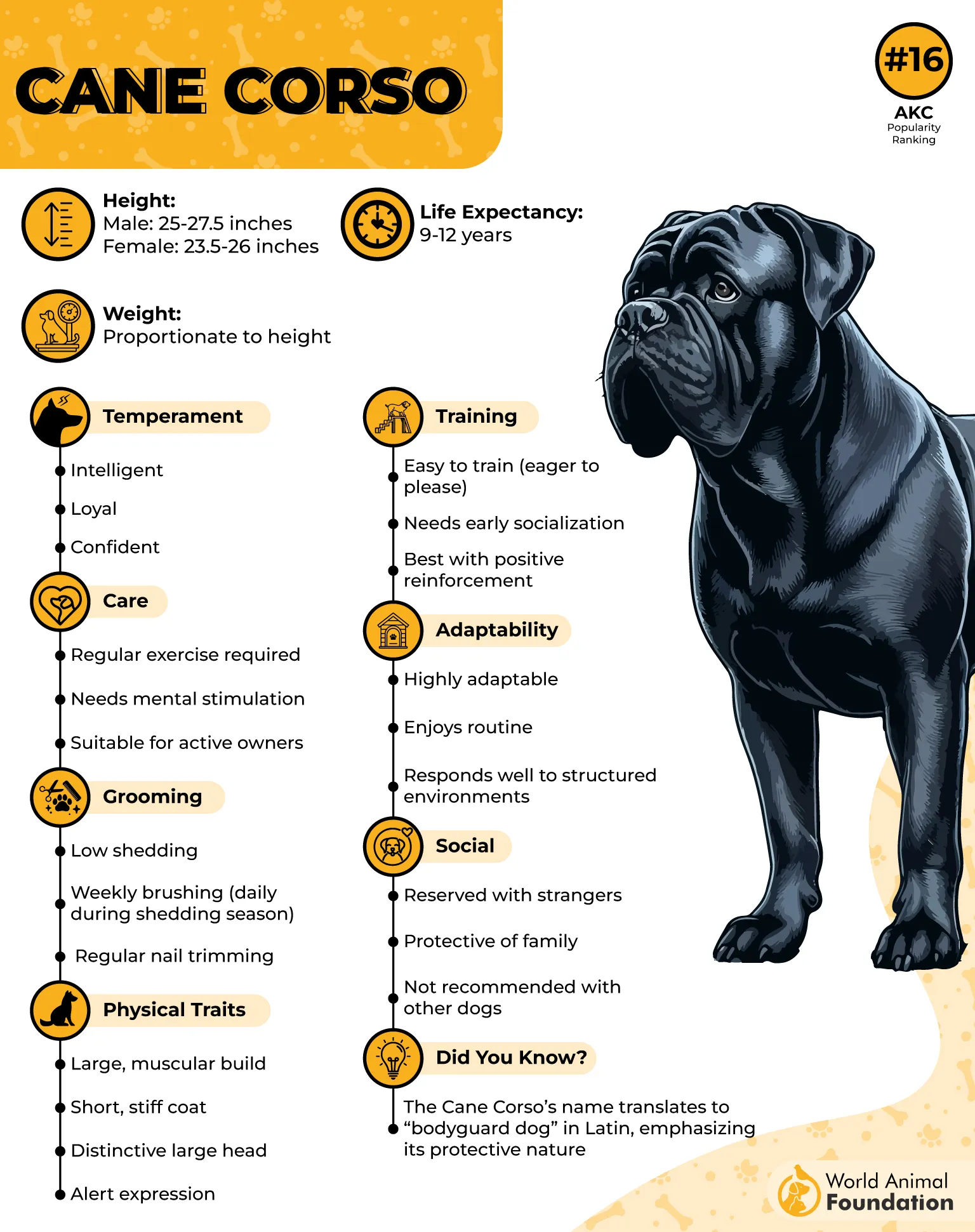
Unique Traits
These protective dog breeds are highly trainable yet assertive, requiring an experienced handler to bring out their best. They are affectionate with family but naturally suspicious of strangers, making them exceptional personal protectors. Their versatility allows them to excel in various roles—guarding, tracking, and even working with livestock.
They possess a deep, resonant bark that serves as an effective first line of defense, paired with a fearless temperament when action is required. Early socialization and consistent training are essential to prevent dominance issues and ensure they remain reliable guardians.
Fact: The Cane Corso’s lineage can be traced back to ancient Roman war dogs, reflecting over two millennia of protective instinct.
3. Doberman Pinscher
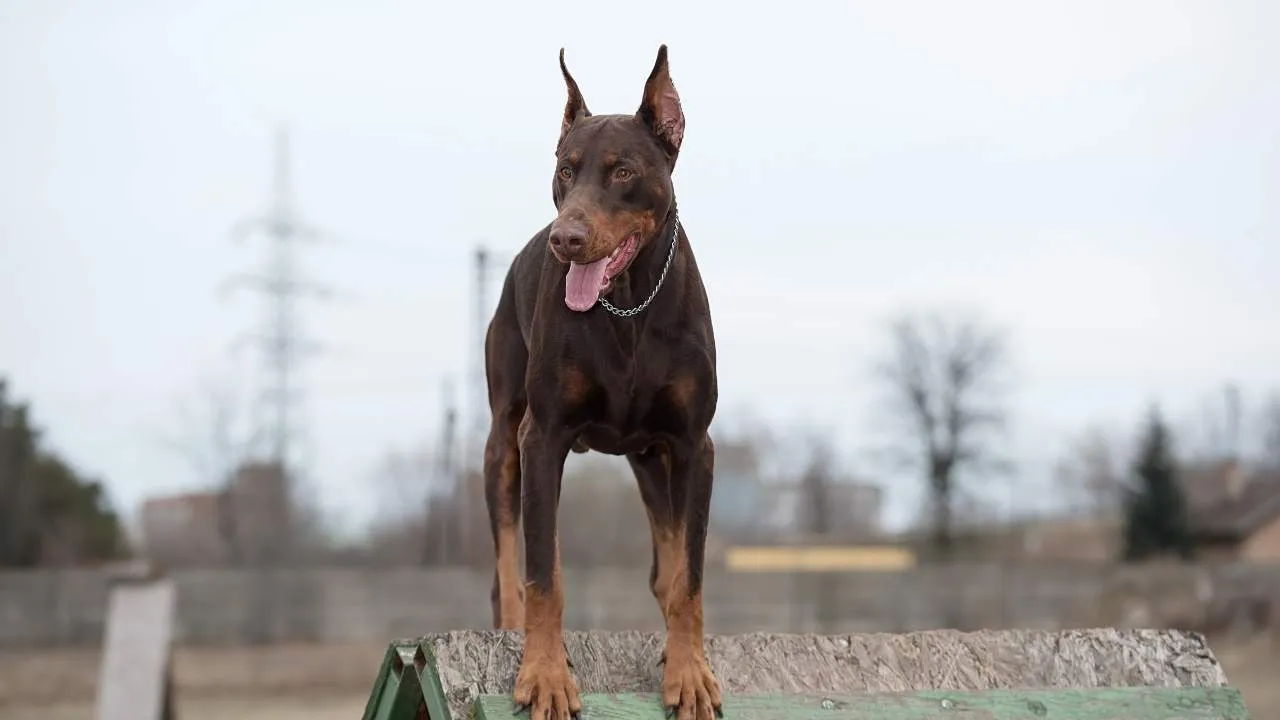
The Doberman Pinscher—also called “Dobe” or “Dobie”—is a sleek, athletic, and highly intelligent working breed that has long been favored for protection. WebMD says Doberman Pinschers are strong, intelligent, and brave, and are often used as guard dogs.
Originating in Germany in the late 19th century, they were first bred to guard tax collectors, combining strength, speed, and alertness in one impressive package.
Standing 24 to 28 inches tall at the shoulder and weighing between 65 to 100 pounds, their streamlined, muscular frame is paired with a short, smooth coat in black, blue, red, or fawn, often accented by rust markings.
Dobermans typically live 10 to 12 years and are part of the AKC’s Working Group, excelling as both guardians and affectionate companions.
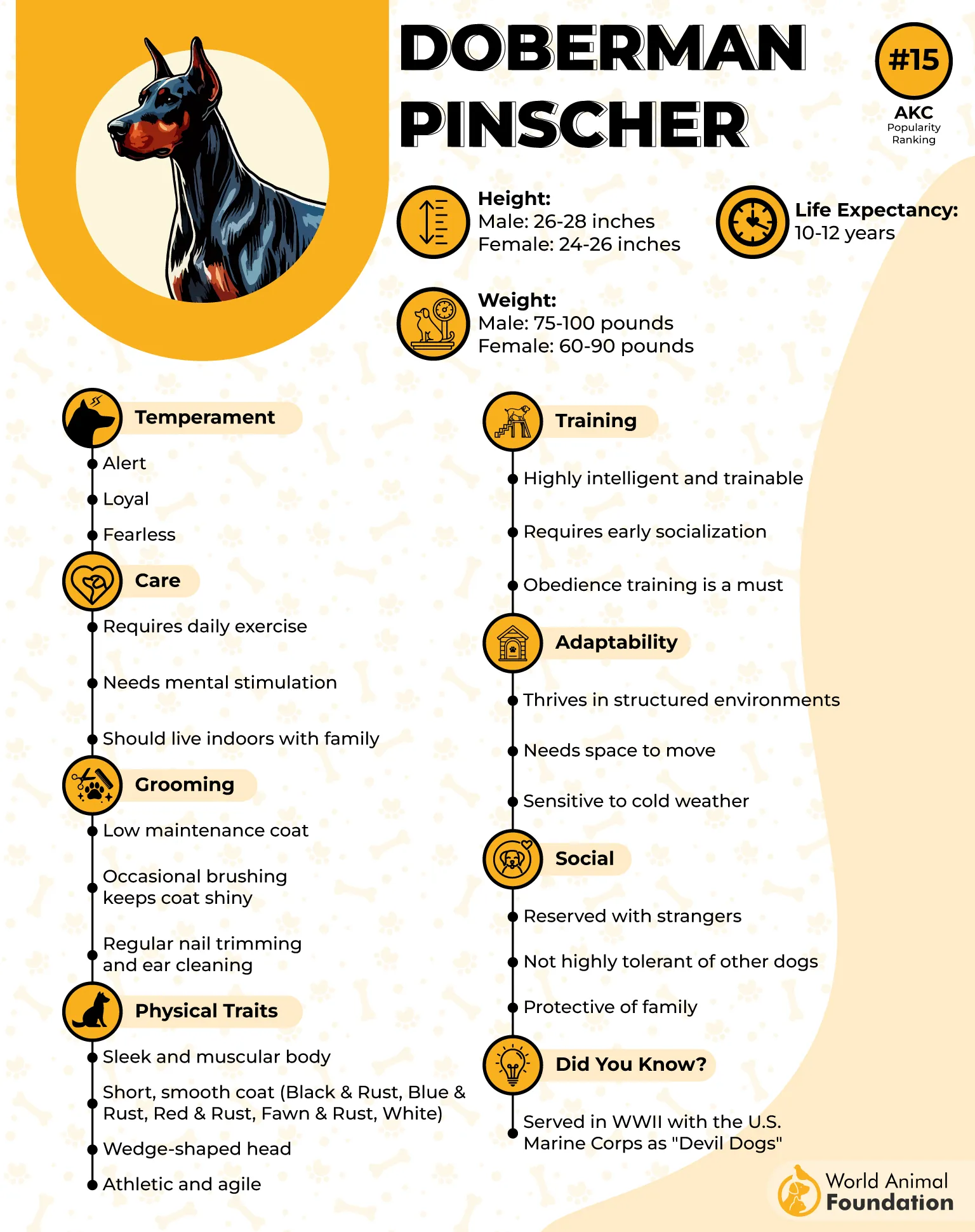
Unique Traits
Dobermans are the embodiment of focus and loyalty, often described as the “strong, silent type.” With natural protectiveness, a sharp mind, and a fearless disposition, they are quick to assess threats and act decisively—sometimes even without a handler’s command.
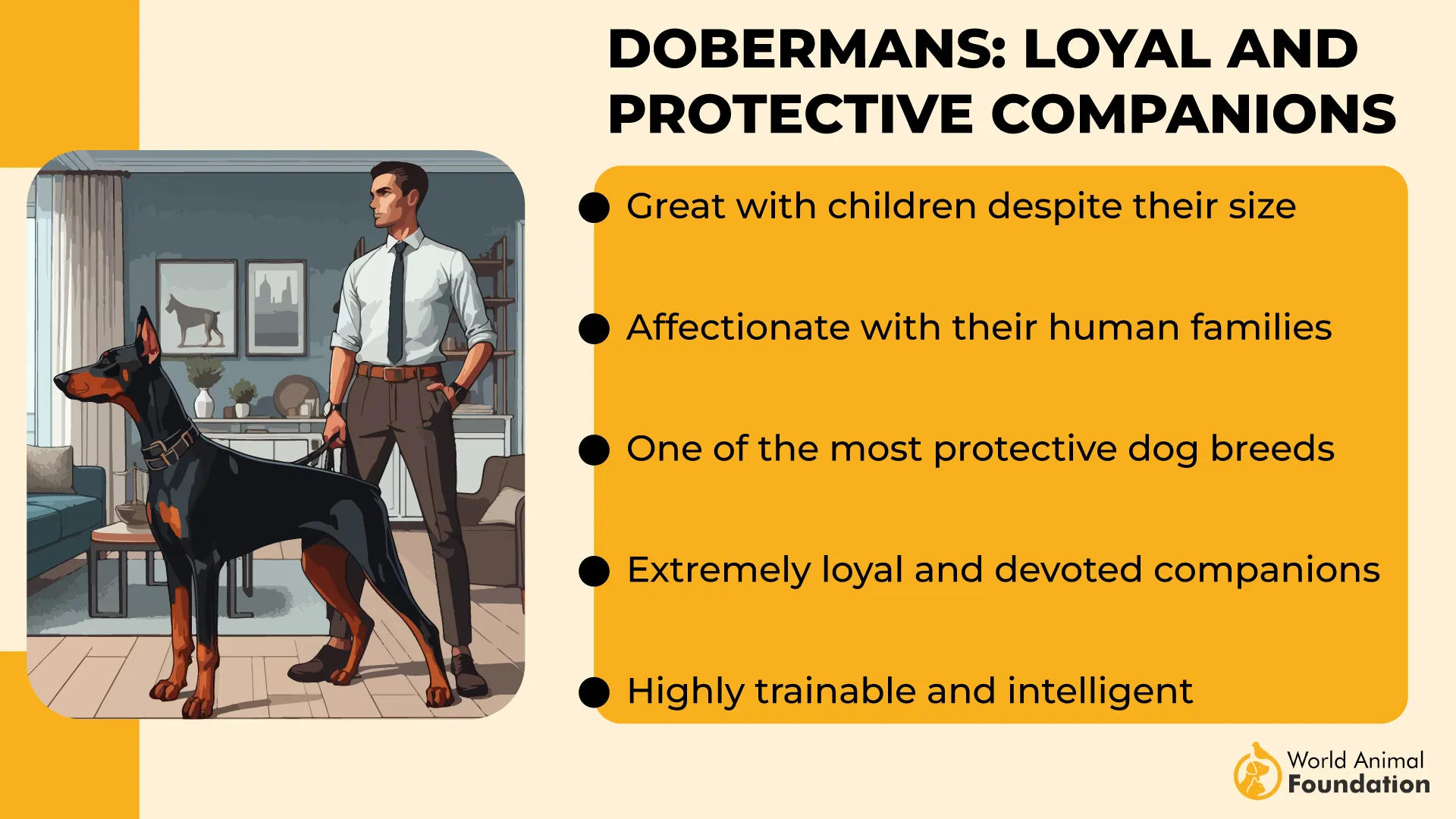
Their trainability stems from a strong desire to please, making them highly responsive to structured guidance. They possess an impressive balance of speed, agility, and endurance, allowing them to cover ground quickly and deter intruders with sheer presence. Off-duty, they can be goofy and affectionate, forming deep emotional bonds with their families.
Fact: Despite their formidable reputation, a well-trained Doberman can excel not only as a guard dog but also as a therapy dog, thriving in social and family settings.
4. Rottweiler
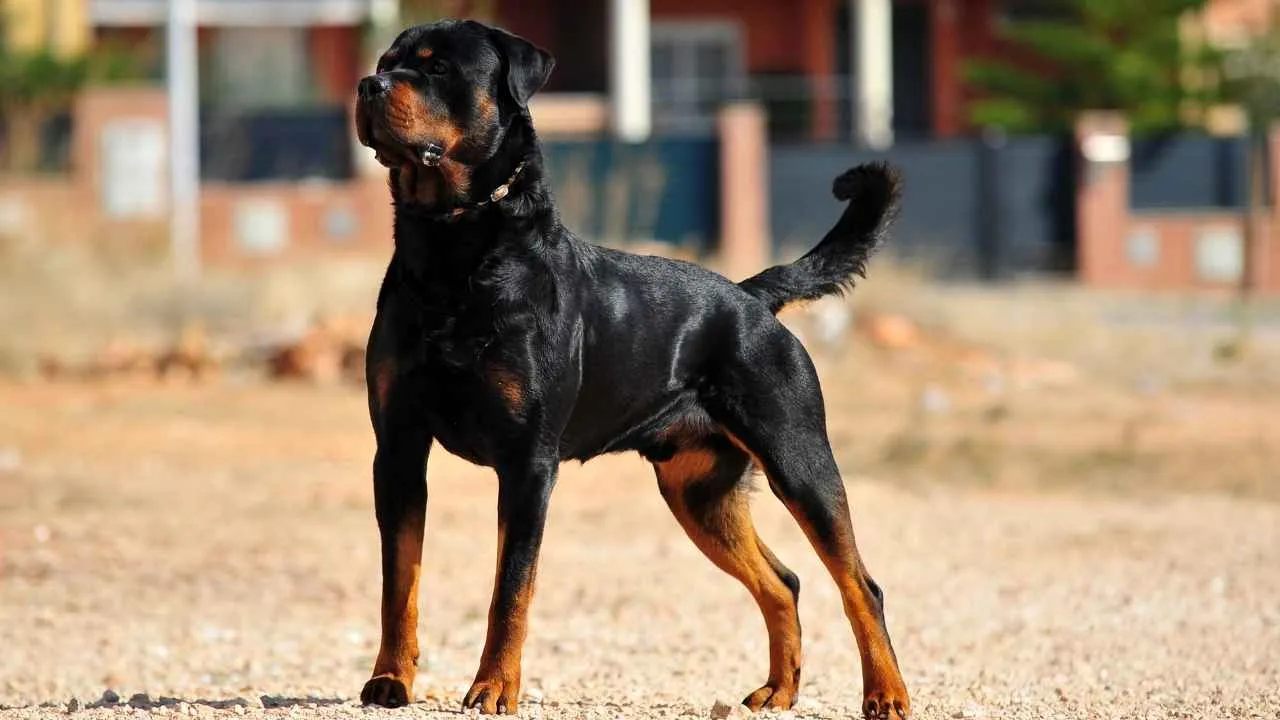
The Rottweiler, also known as the “Rottie,” is a powerful working breed with roots tracing back to Roman mastiffs that once guarded livestock and accompanied legions. Over centuries, these dogs evolved into reliable guardians and versatile workers, prized for their courage and physical strength.
Standing 22 to 27 inches at the shoulder and weighing between 80 and 130 pounds, Rottweilers have a compact yet muscular build, a broad head, and a short, glossy black coat accented with rust, tan, or mahogany markings.
They belong to the AKC Working Group and typically live 8 to 10 years. Known for their imposing presence, they balance protective instincts with deep affection for their family.
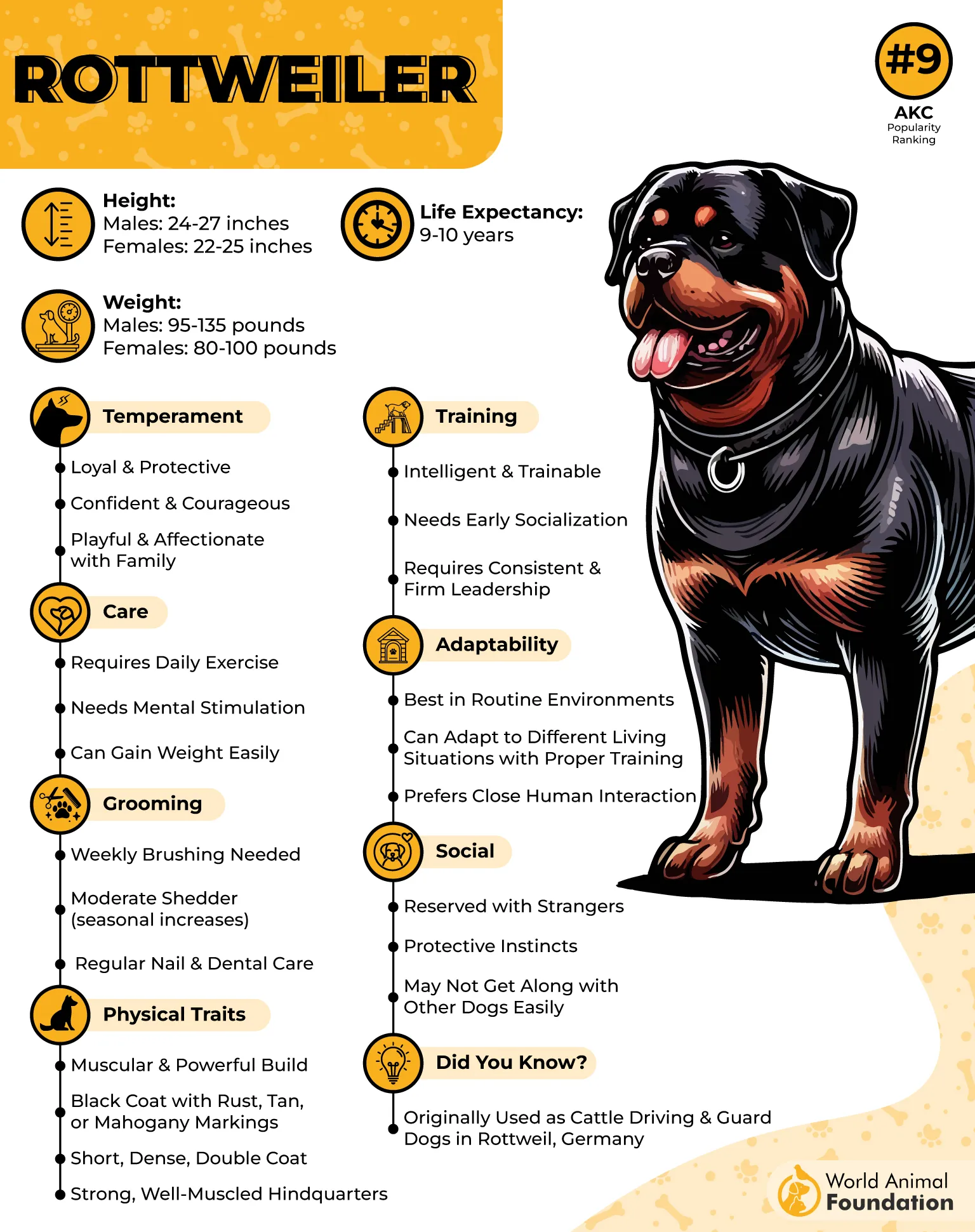
Unique Traits
Rottweilers excel as protectors due to their keen territorial instincts, unwavering loyalty, and strong work ethic. Naturally confident and self-assured, they tend to be aloof with strangers but form intense bonds with their owners.
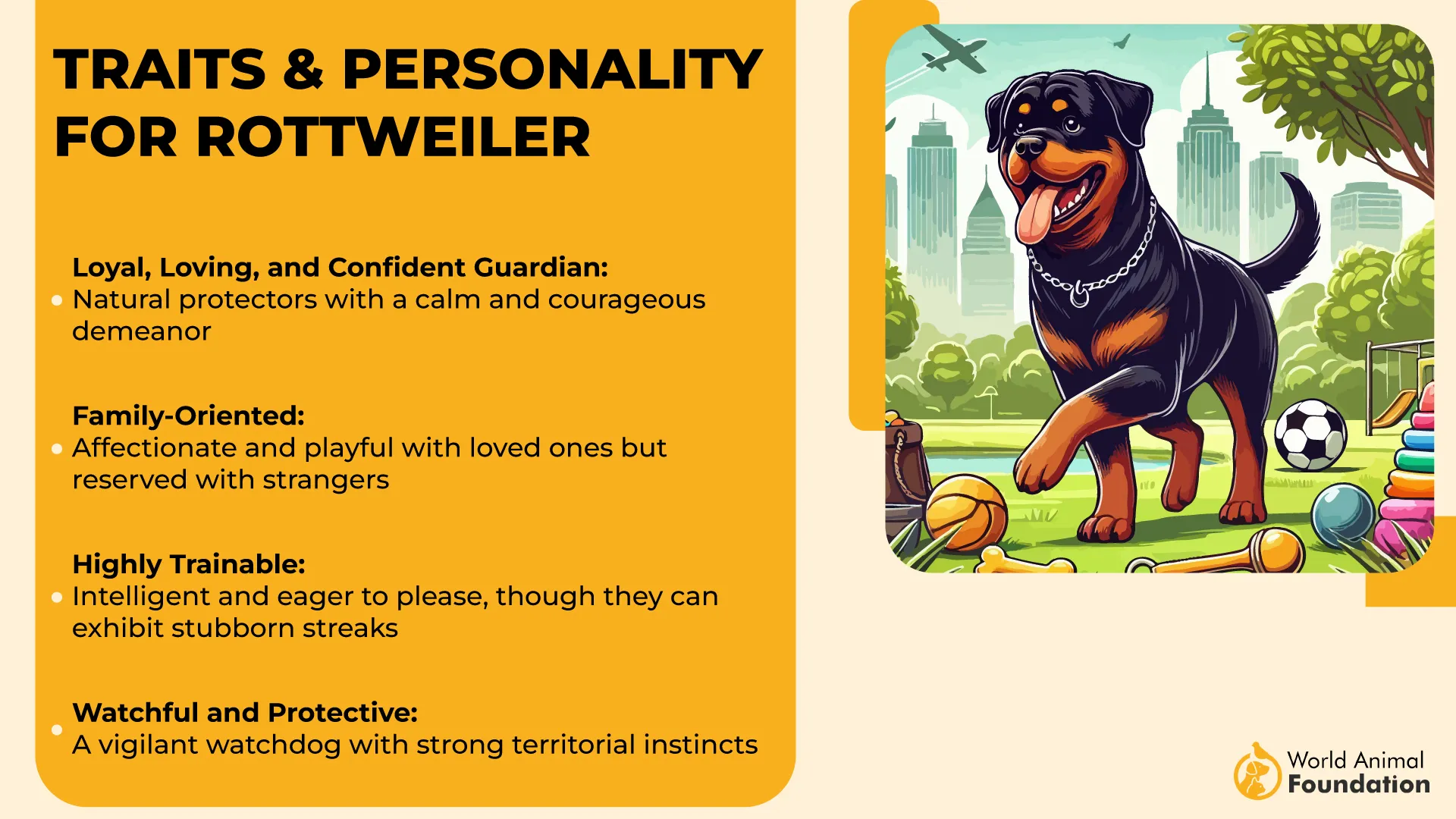
Their intelligence and eagerness to learn make them highly trainable, especially in obedience, herding, and protection work. They are agile despite their size, with a distinctive, effortless trotting gait powered by muscular hindquarters.
When properly socialized, Rottweilers are calm, dependable, and adaptable, equally capable as family companions or dedicated security partners.
Fact: The Rottweiler’s lineage nearly vanished in the late 1800s but was revived by dedicated breeders, ensuring its place today as one of the most respected protection breeds.
5. Giant Schnauzer
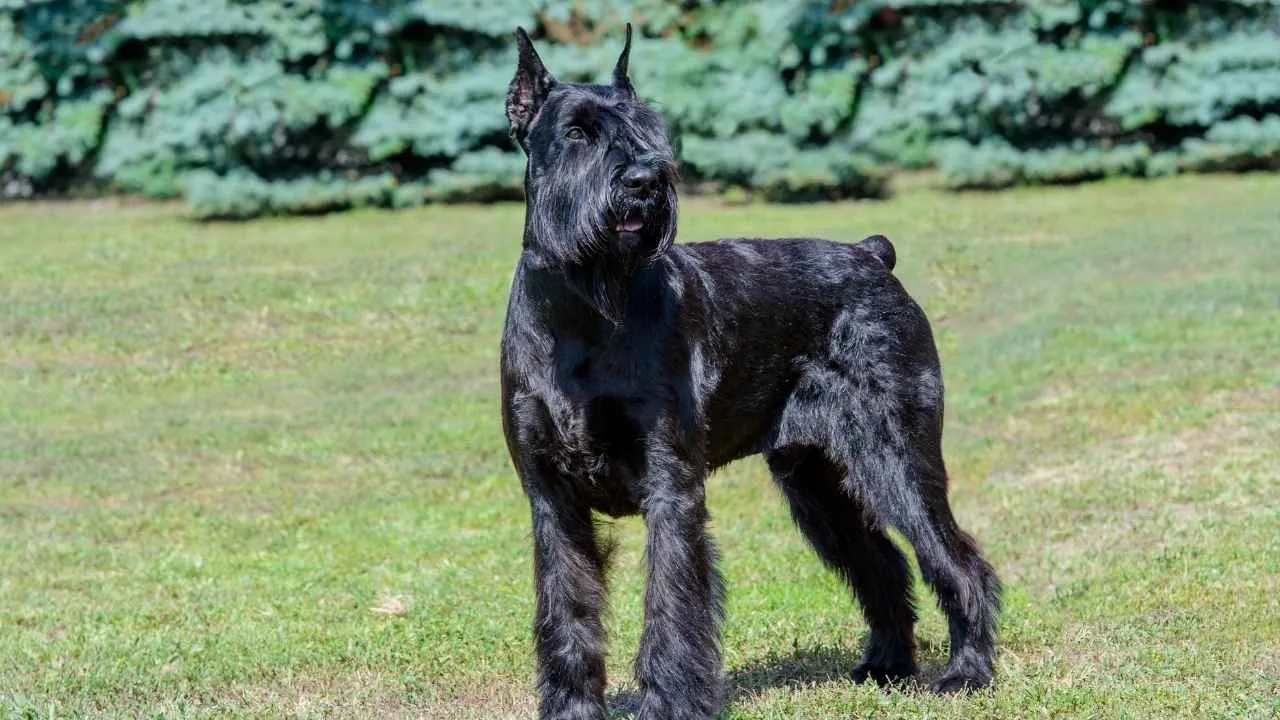
Standing as the largest of the Schnauzer trio, the Giant Schnauzer is an imposing yet refined working breed originating from Germany. Initially developed to drive cattle to market and protect livestock, they evolved into versatile guard and police dogs.
Males can reach up to 27.5 inches at the shoulder and weigh around 95 pounds, with a muscular frame, dense weather-resistant double coat in solid black or “pepper and salt,” and the hallmark beard and bushy eyebrows that lend them a distinguished, intelligent look. Known also as Riesenschnauzer, they belong to the Working Group and typically live 12–15 years.
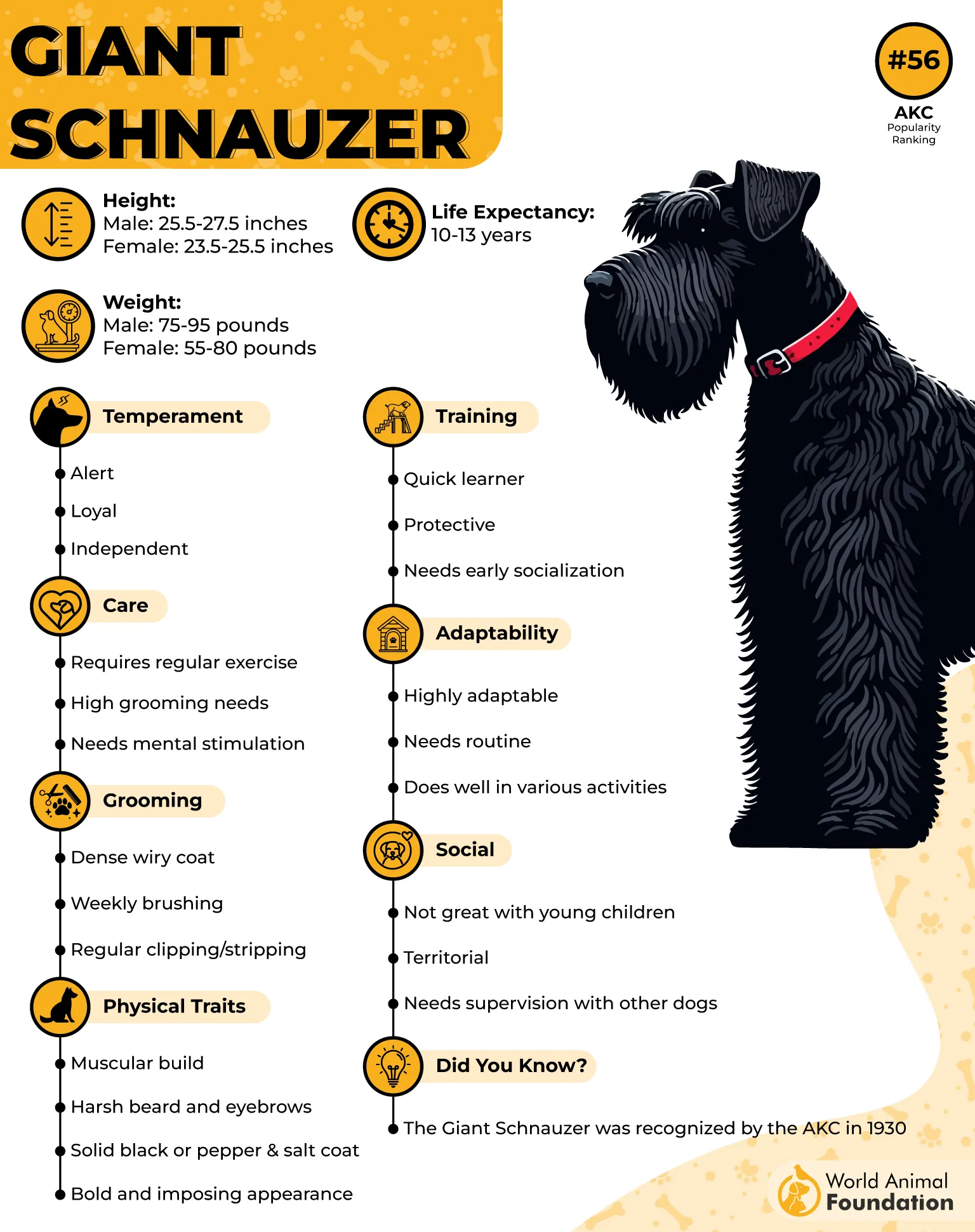
Unique Traits
These excellent guard dogs are powerful, highly intelligent, and deeply loyal, making them exceptional for VIP protection. They are extremely attuned to their surroundings, quick to detect and respond to unusual activity, and naturally territorial without being needlessly aggressive when well-trained.
Resistant to pain and blessed with strong endurance, they excel in demanding security roles. Their eagerness to please and high obedience potential mean they respond well to firm, consistent training, though they require significant mental and physical stimulation.
Without sufficient engagement, their sharp minds can lead to mischief, so they thrive with owners who can match their energy and commitment.
Fact: Despite their dignified demeanor, Giant Schnauzers have a playful, exuberant side and love joining their owners for activities like jogging or long walks.
6. Belgian Malinois
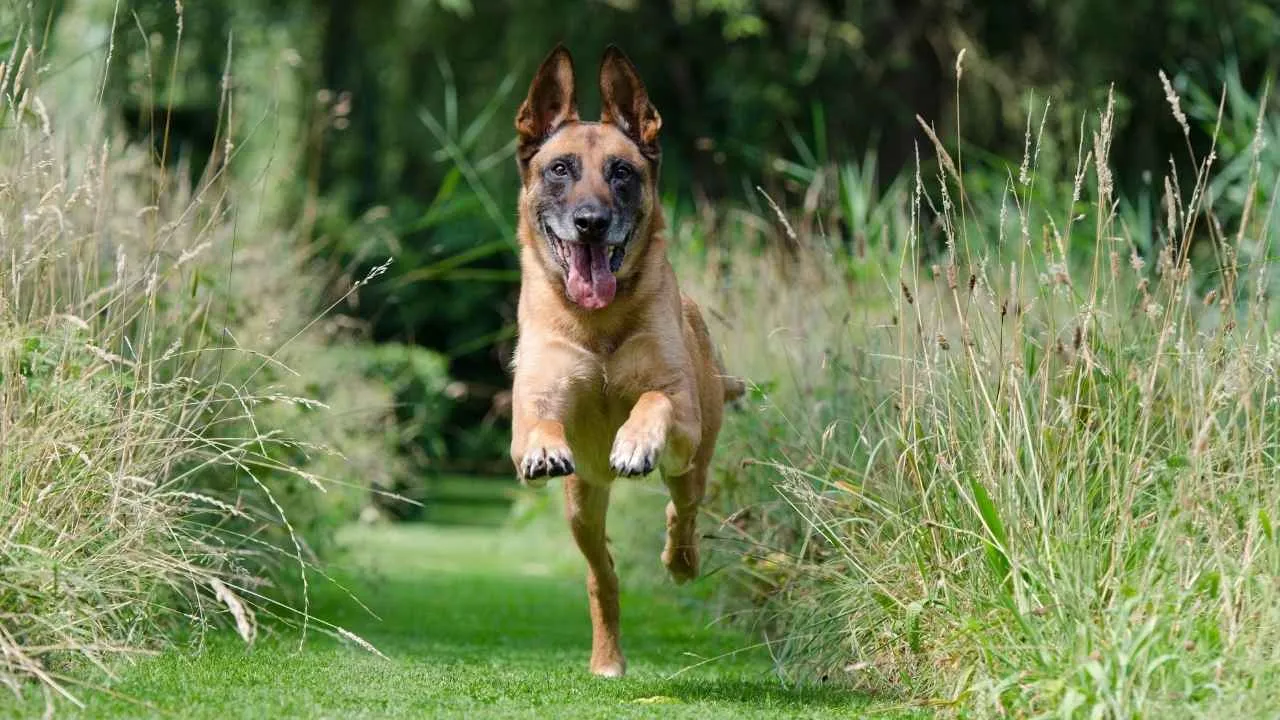
The Belgian Malinois, also known as the Malinois Shepherd, originated in Malines, Belgium, where it was originally bred for herding and guarding livestock. Belonging to the herding group, this athletic breed stands about 22–26 inches tall and weighs between 40–80 pounds.
Known for its square, well-proportioned build, the Malinois has a proud head carriage, short fawn-to-mahogany coat, and distinct black mask and ears. With a life expectancy of 14–16 years, it has a lean, muscular frame built for speed and endurance—qualities that have made it a favorite among police and military units worldwide.
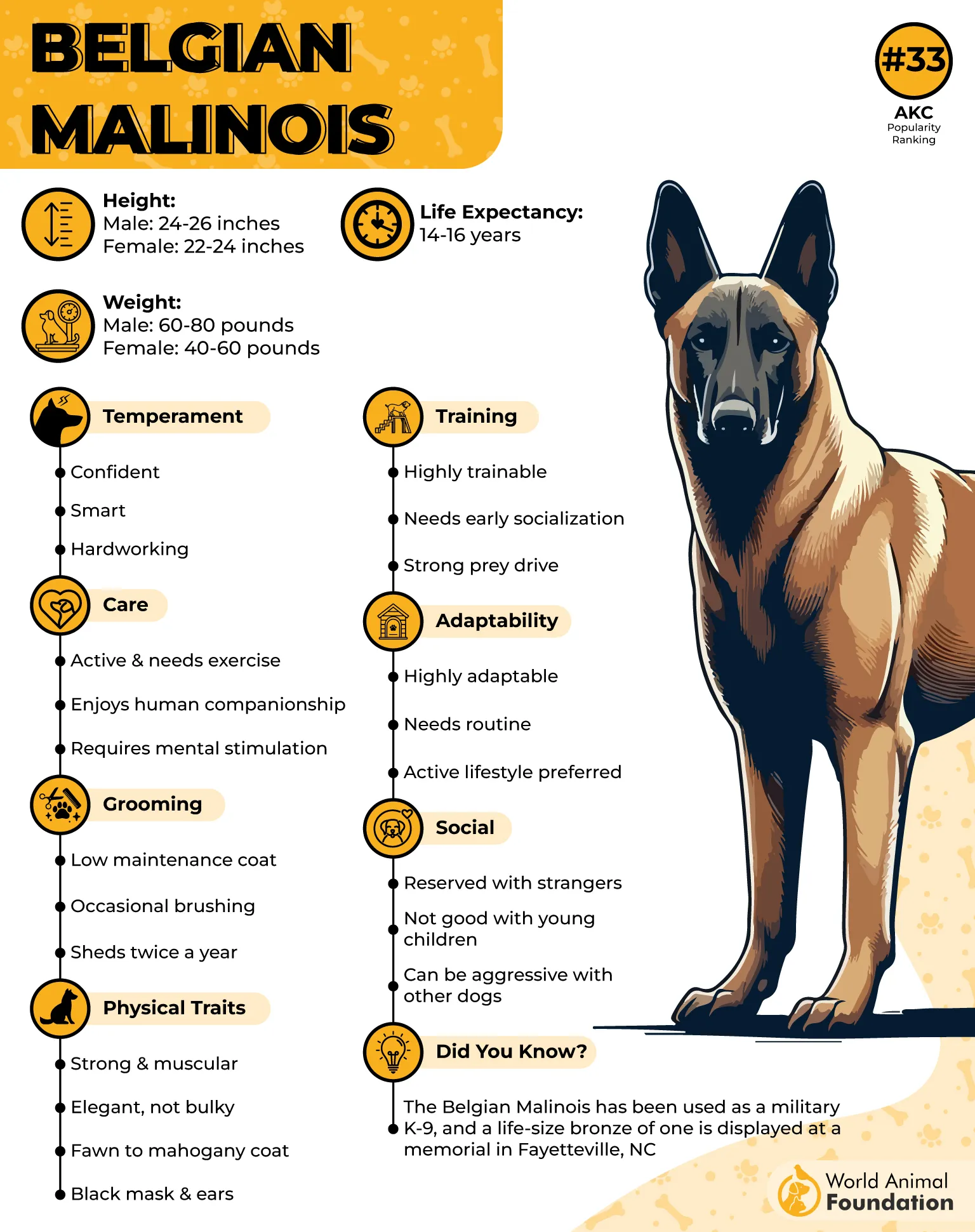
Unique Traits
Renowned for its extraordinary work ethic and stamina, this guard dog breed thrives when given tasks that challenge both its mind and body. Its high prey drive, strong defensive instincts, and ability to quickly switch into fight drive make it exceptional for VIP protection roles.
This breed forms intense bonds with its handler, responds swiftly to commands, and remains alert in all environments. Its agility, intelligence, and adaptability enable it to excel in pursuits from tracking and detection to personal protection.
However, the Malinois demands structured training, early socialization, and significant daily exercise to prevent restlessness or destructive behaviors.
Fact: A Belgian Malinois named “Cairo” famously assisted SEAL Team 6 during the 2011 raid on Osama bin Laden’s compound.
7. Boxer
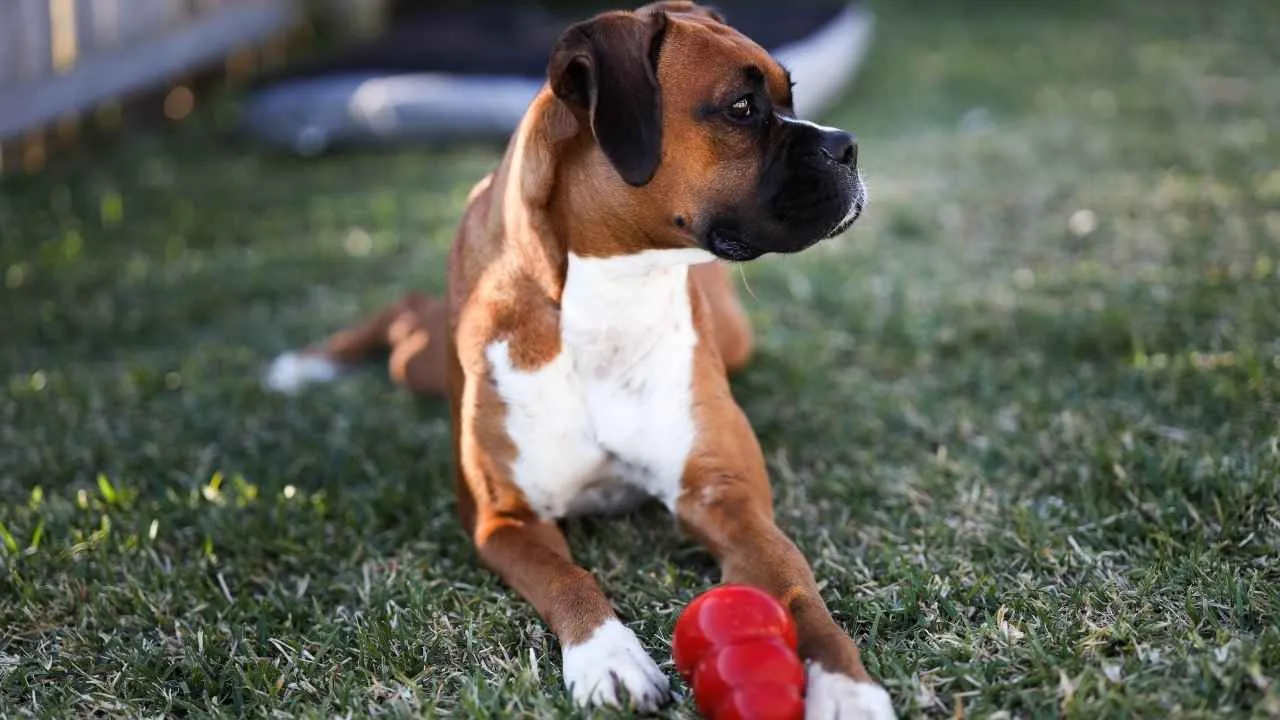
Originating in 19th-century Germany, the Boxer—also known simply as “Boxl” in its early days—descends from the now-extinct Bullenbeisser crossed with Mastiffs, Bulldogs, and possibly Great Danes. Initially bred for bull-baiting and later as butcher’s assistants controlling cattle, Boxers became popular in the United States after World War I, rising in prominence by the 1940s.
Males stand up to 25 inches tall, while females are slightly smaller; their weight ranges from 50 to 80 pounds.
Their athletic build is complemented by a short, tight-fitting coat in fawn or brindle, often with white markings, and an expressive face marked by dark eyes and a wrinkled forehead. Boxers belong to the Working Group and have an average lifespan of 10 to 12 years.
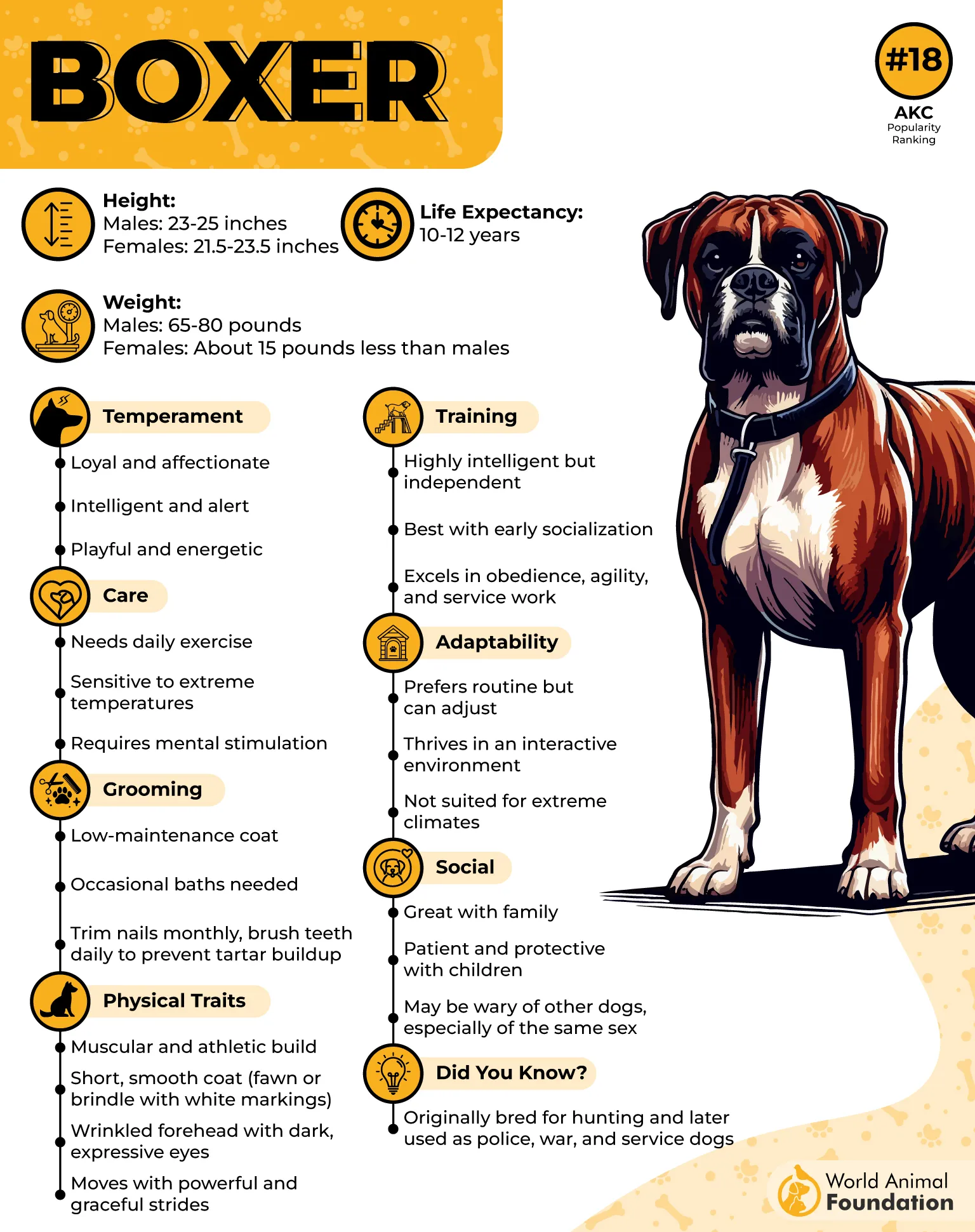
Unique Traits
Boxers are celebrated for their playful, patient, and affectionate temperament—qualities that make them excellent family companions while maintaining a protective edge. They are intelligent, loyal, and alert, able to balance gentleness with courage when facing potential threats.
Early training and socialization are essential, as their high energy demands regular exercise and mental engagement. Their natural watchfulness, combined with an upbeat, people-oriented personality, ensures they can transition seamlessly between spirited playmate and steadfast guardian.
Fun Fact: These great guard dogs are known for using their front paws to “spar” during play, a mannerism thought to have inspired their name.
Conclusion
Choosing the right protection dog is about more than just size or strength—it’s about temperament, trainability, and compatibility with your lifestyle. The best family protection dogs balance vigilance with affection, serving as both loyal companions and dependable guardians.
From powerful working breeds to versatile companions like the Bernese Mountain Dog or Staffordshire Bull Terrier, each offers unique strengths when paired with proper protection training. Whether your goal is a personal protection dog for individual safety or a family guard dog to safeguard your home, selecting a breed with the right instincts is key.
It’s also worth remembering that even a rescue dog can sometimes excel in a protective role if given the right environment, training, and care. Many of these dogs become wonderful family pets—loving, trustworthy, and deeply bonded to their people. With well-structured guidance, trained protection dogs can provide both peace of mind and unwavering companionship, ensuring your safety without sacrificing warmth and connection in your home.


